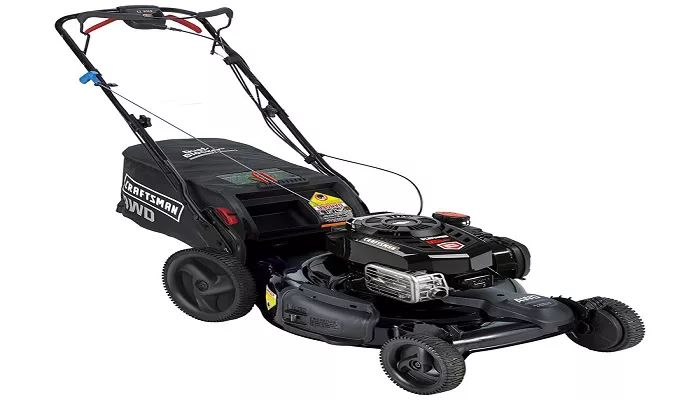Lawn mowers are essential tools for maintaining healthy and aesthetically pleasing lawns. Among the various types of lawn mowers available, those equipped with Overhead Valve (OHV) engines are highly regarded for their efficiency, durability, and performance. This article provides a professional and detailed examination of OHV lawn mowers, covering their design, advantages, maintenance requirements, and comparisons with other engine types.
What is an OHV Lawn Mower?
An OHV lawn mower is a type of lawn mower powered by an overhead valve (OHV) engine. OHV refers to the engine’s valve configuration, where the intake and exhaust valves are located in the cylinder head, above the combustion chamber. This design contrasts with older side-valve (flathead) engines, where valves are positioned beside the piston.
OHV engines are commonly used in modern lawn mowers due to their superior fuel efficiency, reduced emissions, and enhanced power output. Brands like Briggs & Stratton, Honda, and Kohler frequently incorporate OHV technology in their residential and commercial mowers.
How OHV Engines Work
Basic Engine Components
Cylinder Head: Houses the intake and exhaust valves.
Valves: Control the flow of air-fuel mixture and exhaust gases.
Pushrods: Transfer motion from the camshaft to the rocker arms.
Rocker Arms: Open and close the valves.
Camshaft: Regulates valve timing.
Piston & Combustion Chamber: Where fuel ignition occurs.
The Four-Stroke Cycle
Intake Stroke: The intake valve opens, allowing the air-fuel mixture into the combustion chamber.
Compression Stroke: The piston compresses the mixture.
Power Stroke: The spark plug ignites the mixture, forcing the piston down.
Exhaust Stroke: The exhaust valve opens, expelling burnt gases.
Advantages of OHV Lawn Mowers
Fuel Efficiency
- OHV engines optimize fuel combustion, reducing gasoline consumption.
- Less wasted fuel means longer runtime per tank.
Lower Emissions
- Complete combustion results in fewer hydrocarbon emissions.
- Complies with environmental regulations (e.g., EPA standards).
Increased Power & Torque
- Better airflow improves engine performance.
- Ideal for thick grass, slopes, and tough mowing conditions.
Maintenance Tips for OHV Lawn Mowers
Regular Oil Changes
- Use SAE 30 or 10W-30 oil (check manufacturer recommendations).
- Change oil every 50 hours or at least once per season.
Air Filter Care
- Clean or replace the air filter regularly.
- A clogged filter reduces engine efficiency.
Spark Plug Inspection
- Check for carbon buildup and replace if necessary.
- Ensure proper gap spacing (typically 0.030 inches).
Choosing the Right OHV Lawn Mower
Lawn Size & Terrain
Small lawns: Push mowers with OHV engines (e.g., Honda HRN216).
Large yards: Self-propelled or riding mowers (e.g., Troy-Bilt TB330).
Engine Brand Reputation
Briggs & Stratton: Reliable, widely available parts.
Honda: Premium efficiency and durability.
Kohler: High-performance commercial-grade engines.
Additional Features
- Electric start for convenience.
- Mulching capability for nutrient recycling.
- Adjustable cutting height for versatility.
Future of OHV Lawn Mowers
- High torque for tough mowing conditions.
- Lower upfront cost compared to lithium-ion models.
- Established repair and part availability.
Conclusion
OHV lawn mowers represent a perfect balance of power, efficiency, and durability. Their advanced valve configuration makes them superior to traditional flathead engines while remaining cost-effective compared to OHC or electric alternatives. By understanding their mechanics, benefits, and maintenance needs, users can maximize their mower’s lifespan and performance.
For homeowners and landscaping professionals seeking a reliable, fuel-efficient, and powerful mowing solution, an OHV lawn mower is an excellent investment. Regular upkeep ensures these machines remain a cornerstone of lawn care for years to come.

